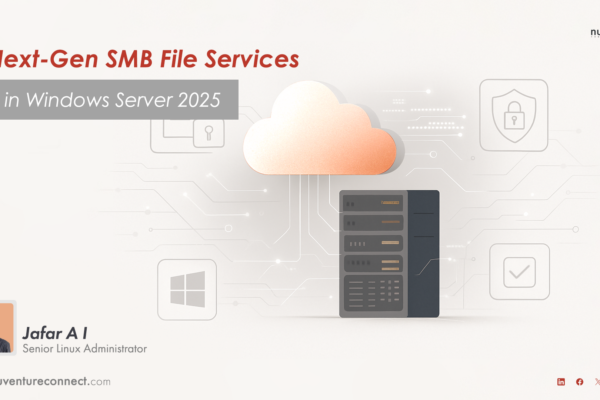In cloud computing, managing complex infrastructure efficiently is paramount.
Apache CloudStack a powerful and versatile open-source software platform designed to deploy and manage large networks of virtual machines, providing a scalable and robust infrastructure-as-a-service (IaaS) solution.
This article delves into the key features, architecture, benefits applications of Apache CloudStack.
Overview of Apache CloudStack
Apache CloudStack is an open-source cloud computing platform that empowers to efficiently deploy and manage large-scale virtual machine environments.
Apache CloudStack a cloud computing platform designed to deploy and manage large networks of virtual machines, creating a scalable and efficient infrastructure-as-a-service (IaaS) environment.
Initially developed by Cloud.com in 2008, it was later acquired by Citrix in 2011 and contributed to the Apache Software Foundation (ASF) in 2012, becoming a top-level project.
Apache CloudStack is a Java-based project that provides a management server and agents (if needed) for hypervisor hosts, enabling the creation of both public and private IaaS clouds.
It supports multiple hypervisors, including VMware, KVM, XenServerand Hyper-V. CloudStack manages cloud resources through a central Management Server, which handles user requests, resource allocationand communication with hypervisor hosts. platform supports advanced networking, storage managementand automation features, making it a versatile tool for cloud infrastructure management.
Understanding the Core:
CloudStack acts as a central hub for managing your cloud infrastructure. It supports various hypervisors (software that manages virtual machines) like VMware, KVM, XenServerand Hyper-V, a hypervisor as a conductor overseeing an orchestra of virtual machines.
CloudStack utilizes a Management Server to orchestrate cloud resources. This server interacts with hypervisors on individual host machines, allowing for the creation of both public (accessible from the internet) and private (internal) IaaS clouds.
It offers advanced features for robust cloud management, including:
Networking: Manage virtual networks, security groups and leverage Software Defined Networking (SDN) capabilities.
Storage: Integrate with local storage, Network File System (NFS), iSCSI (internet SCSI) and object storage solutions.
Automation: Automate repetitive tasks for streamlined cloud operations, minimizing human error.
Apache CloudStack Architecture
Apache CloudStack’s architecture is composed of several key components:
Management Server: The central component that orchestrates the entire cloud environment, managing the allocation of resources, user managementand communication with hypervisors.
Hypervisor Hosts: Physical servers running the hypervisor software that hosts the virtual machines.
Primary Storage: The storage used by the hypervisors to host virtual machine disk images.
Secondary Storage: Used to store templates, ISO images and snapshots.
Network Management: Components responsible for managing the networking aspects, including virtual routers, load balancers and firewalls.
User Interface: Web-based GUI and the API that allow administrators and users to interact with the cloud environment.

Figure 1: Apache CloudStack Architecture
Setting Up Cloud Environment with Apache CloudStack:
Apache CloudStack can be deployed in various environments, including private data centers, public cloud providers and hybrid cloud setups.
Deploying CloudStack involves several steps:
Preparation: Configure DNS entries, NFS storage, static IP addresses, security settings (SELinux), time synchronization (NTP)and the MySQL database.
Management Server Installation: Install CloudStack software on the management server, configure the database and set up firewall rules.
Hypervisor Configuration: Install and configure chosen hypervisors on host servers. KVM hypervisors require additional configuration steps.
Storage Setup: Configure primary storage for virtual machine disk images and secondary storage for templates, ISO images and snapshots.
Network Configuration: Define your network architecture, including public, privateand management networks. Set up virtual routers, firewallsand load balancers as needed.
Zone Creation: Use the web-based interface to create zones, specifying hypervisor type, DNS servers, network interfacesand storage details.
Service Offerings: Define compute and storage resource allocation options for virtual machines.
Virtual Machine Deployment: Deploy and manage VMs through the CloudStack UI, configuring network settings and allocating resources.
Key Features & Benefits of Apache CloudStack
Apache CloudStack is a robust Infrastructure-as-a-Service (IaaS) platform with a comprehensive set of features
Core Features:
Multi-hypervisor support: Provides flexibility in deployment choices.
Scalability: Handles large-scale deployments with thousands of servers.
Advanced Networking: Offers robust networking capabilities.
Storage Management: Integrates with various storage solutions.
Automation and Orchestration: Automates cloud operations for efficiency.
Multi-tenancy: Enables secure sharing of cloud infrastructure between users or organizations.
Web-based UI: Provides a user-friendly interface for cloud management.
Native and Optional APIs: Offers a native API and the option for an Amazon S3/EC2 compatible API.
Network Services Orchestration: Manages L2-L7 network services (e.g., DHCP, firewalls, VPNs).
Resource Accounting: Tracks cloud resource usage for network, computeand storage.
User Management: Facilitates robust user management with account separation.
Cost-Effectiveness: Open-source model eliminates licensing costs.
Flexibility and Control: Customizable to meet specific organizational requirements.
Community Support: Backed by a vibrant community and continuous development.
Enterprise-Ready: Suitable for enterprise environments with advanced features.
Proven Reliability: Trusted by major companies and service providers.
Management UI: AJAX-based, compatible with most browsers, easily integrable.
Self Service UI: Customizable HTML/CSS with jQuery.
Access and Security:
Console Access: noVNC client for browser-based VM access.
Single Sign-On: Secure integration with existing applications.
Dynamic Roles: Admin, Domain-Adminand User roles, plus custom roles.
Resource Management:
Virtual Data Centers: On-demand, usage-billed resources.
Workload Management: Automated resource distribution.
Network Virtualization: VLAN support, MPLS, secure resource isolation.
Hypervisor Agnostic: Supports KVM, VMware, Citrix XenServer, XCP-ng.
Storage Solutions:
Multiple Storage Options: iSCSI, NFS, Ceph RBD, etc.
Template Management: Create, uploadand share OS templates and ISOs.
Snapshot Management: Ad hoc and scheduled snapshots for disaster recovery.
Storage Tiering: Optimize storage allocation based on application needs.
Block Storage Volumes: NAS or local disk, attachable/detachable.
Service and Template Management:
Service Management: Define, meterand manage service offerings.
Template Creation: Easy creation from guest OS ISO or existing VMs.
High Availability and Sync:
VM Sync: Monitors and maintains VM states.
Live in Migration: No downtime during host maintenance.
APIs and Integrations:
Powerful API: Well-documented, supports Amazon EC2 and S3 APIs.
OpenStack Swift: Integration for secondary storage.
Network Services:
Virtual Routers, Firewalls, Load Balancers: Software and hardware support.
NetScaler Support: MPX, VPX & SDX devices, Layer-4 load balancing.
User and Project Management:
Projects: Collaborative resource sharing within defined groups.
User Data: Submit binary user data during VM deployment.
Monitoring and Notifications:
Usage Metering: Real-time visibility and billing integration.
Alerts and Notifications: Threshold-based alerts via API or email.
Event/Audit Logs: Detailed logging of user interactions.
Authentication:
SAML and LDAP: Supports authentication and two-factor authentication
Additional Features:
Random Passwords: Auto-generates unique passwords for VMs.
Clustered LVM Support: Starting from version 3.0.
Network as a Service: Compose and migrate network offerings.
Notification & Capacity Thresholds: Alerts and resource allocation prevention.
Apache CloudStack offers numerous benefits that make it an attractive choice for cloud infrastructure management:
Cost-Effective: As an open-source platform, CloudStack eliminates licensing costs, making it a cost effective solution for cloud deployment.
Flexibility and Control: CloudStack provides complete control over cloud infrastructure, allowing customization and optimization according to specific needs.
Community and Support: Backed by the ASF and a vibrant community, CloudStack benefits from continuous development, regular updates and extensive support.
Enterprise-Ready Features: With features like advanced networking, multi-tenancyand resource management, CloudStack is well-suited for enterprise environments.
Proven Reliability: Used by major companies and service providers worldwide, CloudStack has a proven track record of reliability and performance.
Integrating Third-Party Tools with Apache CloudStack
Apache CloudStack can be integrated with various third-party tools to enhance functionality:
Monitoring Tools: Integrate with Nagios, Zabbix, or Prometheus for advanced monitoring and alerting.
Configuration Management: Use tools like Ansible, Puppet, or Chef for automated configuration management and deployment tasks.
CI/CD Pipelines: Integrate with Jenkins, GitLab CI, or other CI/CD tools for automated application deployment and scaling.
Billing and Metering: Implement billing solutions
Depolying Cloud Including HA, Security & Compliance with Apache CloudStack
Apache CloudStack with LINBIT SDS and version 4.19.0, Released in April 2024.
This release includes several new features, performance improvements and bug fixes, continuing CloudStack’s tradition of providing a powerful and flexible platform for cloud infrastructure management.
Combining Apache CloudStack with LINBIT SDS creates an optimal environment for Cloud Providers, Hosting Companies, Finance Industries, ISPsand more. LINBIT SDS provides performance, simplicity and flexibility in storage infrastructures. Its integration with Apache CloudStack offers scalability, data protectionand flexibility.
Open-Source VMware Alternative
Apache CloudStack is designed to orchestrate and manage complex multi-tenant cloud environments.
It provides a comprehensive suite of infrastructure resources, including compute, storage and networking capabilities, suitable for both public and private cloud environments.
it an ideal solution for service providers and various industry-specific use cases.
Apache CloudStack and LINBIT SDS support a broad range of hypervisors, including KVM, Citrix Hypervisorand XCP-ngand offer comprehensive support for VMware vSphere through the vCenter API.
This setup simplifies cloud management, enhances infrastructure flexibility and scalabilityand reduces licensing costs. CloudStack and LINBIT eliminate the need for subscription fees, making them a cost-effective solution for cloud management.
Key CloudStack Features for Service Providers
Hypervisor Agnostic DRS: Efficiently allocates resources across different hypervisor types, ensuring optimal performance and workload distribution.
VMware Migration : Converting VMware Virtual Machines to KVM Hypervisor, Migrating from VMware Cloud Director to CloudStackDisaster Recovery Workload Protection: Provides robust multi-tenant disaster recovery solutions for business continuity.
VMware NSX Integration : VMware NSX with Apache CloudStack brings network virtualization capabilities directly into CloudStack’s management scope
CloudNative Deployments: Supports Kubernetes deployment, facilitating container orchestration and management.
Application Lifecycle Management: Tools for managing the application lifecycle from deployment & maintenance, scaling.
Metering and Usage: Includes metering tools for resource usage monitoring, aiding billing & capacity planning.
Advanced Networking: Provides network topologies, network-as-a-service (NaaS) and fine-grained network control.
Multi-Zone Management: Enhances data center resource utilization and provides geographic redundancy.
Elastic Load Balancer: Ensures efficient distribution of network traffic across multiple servers.
Veeam Integration: Adds robust data protection and backup capabilities.
Object Storage Extension: Supports scalable and flexible storage solutions for large volumes of unstructured data.
2FA (Two-Factor Authentication): Adds an extra layer of protection for user access.
SAML2 and OAuth2: Integrates with SAML2 for secure single sign-on (SSO) & supports OAuth2 for secure authorization.
Access Control: Implement role-based access control (RBAC) to restrict access based on user roles and responsibilities.
Network Security: Use security groups, firewallsand VPNs to protect network traffic.
Data Encryption: Encrypt data at rest and in transit to safeguard sensitive information.
Compliance: Ensure compliance with industry standards and regulations, such as GDPR, HIPAAand PCI-DSS.
Auditing and Logging: Enable detailed logging and auditing to track user activities and detect potential security incidents.
Apache CloudStack is used in various industries and scenarios:
Telecommunications Service Provider: CloudStack for manage network functions virtualization (NFV) infrastructure.
Education and Research: Universities & research institutions provide cloud resources for research projects, student labs and educational programs.
Enterprise IT: Large enterprises use CloudStack to build private clouds, enabling efficient resource management, cost savingsand enhanced security.
Service Providers: Cloud service providers utilize CloudStack to offer public and hybrid cloud services, capitalizing on its multi-tenancy and scalability features.
Effective cloud service management with CloudStack involves:
Resource Allocation: Monitor and allocate resources efficiently to avoid bottlenecks and ensure optimal performance.
Load Balancing: Distribute traffic across multiple servers for improved reliability and performance.
Automation: Implement automation scripts and workflows to streamline tasks and minimize human error.
Monitoring and Reporting: Utilize monitoring tools to track performance metrics and generate reports, enabling proactive management and troubleshooting.
Capacity Planning: Regularly review resource usage and plan for future capacity needs to ensure the cloud environment can scale with demand.
Comparison of Apache CloudStack , VMware SDDC & OpenStack
Apache CloudStack offers a robust, cost-effectiveand versatile solution with multi-hypervisor support, making it ideal for CSPs and MSPs seeking to avoid vendor lock-in and reduce licensing costs. It is particularly attractive for those looking to transition from VMware.
VMware provides a mature, enterprise-grade platform with comprehensive virtualization and cloud management features. It excels in performance, scalabilityand support but comes with higher costs and potential vendor lock-in issues, especially post-Broadcom acquisition.
OpenStack stands out for its open-source, modular architectureand flexibility, making it suitable for organizations seeking highly customizable private cloud solutions. However, its complexity and resource requirements can be challenging for smaller enterprises.
Choosing the right platform depends on the specific needs, expertiseand goals of the organization.
Apache CloudStack and OpenStack offer open-source alternatives with varying levels of customization and complexity, while VMware provides a turnkey, enterprise-focused solution with extensive features and support.
| Feature/Aspect | Apache CloudStack | VMware | OpenStack |
| Overview | Open-source cloud computing platform | Leading virtualization and cloud provider | Open-source cloud computing platform |
| Initial Development | Cloud.com, now an Apache project | Founded in 1998, dominant in virtualization | Launched in 2010 by RackSpace and NASA |
| Key Components | Management Server, Hypervisor Support, Networking, Storage Management, Automation, UI, APIs, VMware NSX Integration | vSphere, vCenter Server, NSX, vSAN, vRealize Suite, VMware Cloud Foundation | Nova, Cinder, Swift, Neutron, Horizon, Keystone, Glance, Heat, Ceilometer, Trove, Magnum, Ironic |
| Licensing Model | Open-source | Proprietary, subscription-based | Open-source |
| Deployment Scenarios | Private and public clouds, hybrid environments | Enterprise data centers, hybrid cloud, managed services | On-premises private clouds, public clouds, edge computing |
| Ease of Use | Intuitive UI, comprehensive API | Centralized management with vCenter, extensive ecosystem | Complex, requires significant expertise |
| Scalability | Suitable for both small and large deployments | High scalability for enterprise workloads | Highly scalable from small to large infrastructures |
| Integration | VMware vSphere, NSX, LINBIT SDS, third-party VNFs | Strong integration within VMware ecosystem and with public clouds | Compatible with various technologies and IT infrastructures |
| Disaster Recovery | Robust multi-tenant disaster recovery | Robust HA and DR solutions | Comprehensive DR through various components and integrations |
| Networking | Advanced networking capabilities, including NSX integration | NSX for network virtualization and security | Neutron for managing networking services |
| Storage | Supports various storage solutions, LINBIT SDS integration | vSAN for hyper-converged storage | Cinder for block storage, Swift for object storage |
| Community Support | Strong community support, continuous development | Extensive enterprise support, large community | Strong community support, continuous development |

Figure 2: Architecture of Apache Cloud Stack , VMware SDDC & OpenStack
In conclusion, Apache CloudStack is a powerful and versatile cloud computing platform that offers organizations the tools and capabilities needed to deploy, manageand scale their cloud infrastructure effectively.
its comprehensive feature set, seamless integration capabilities, robust security measuresand scalability options, CloudStack empowers organizations to drive innovation, enhance efficiencyand achieve their business objectives in today’s digital age.




